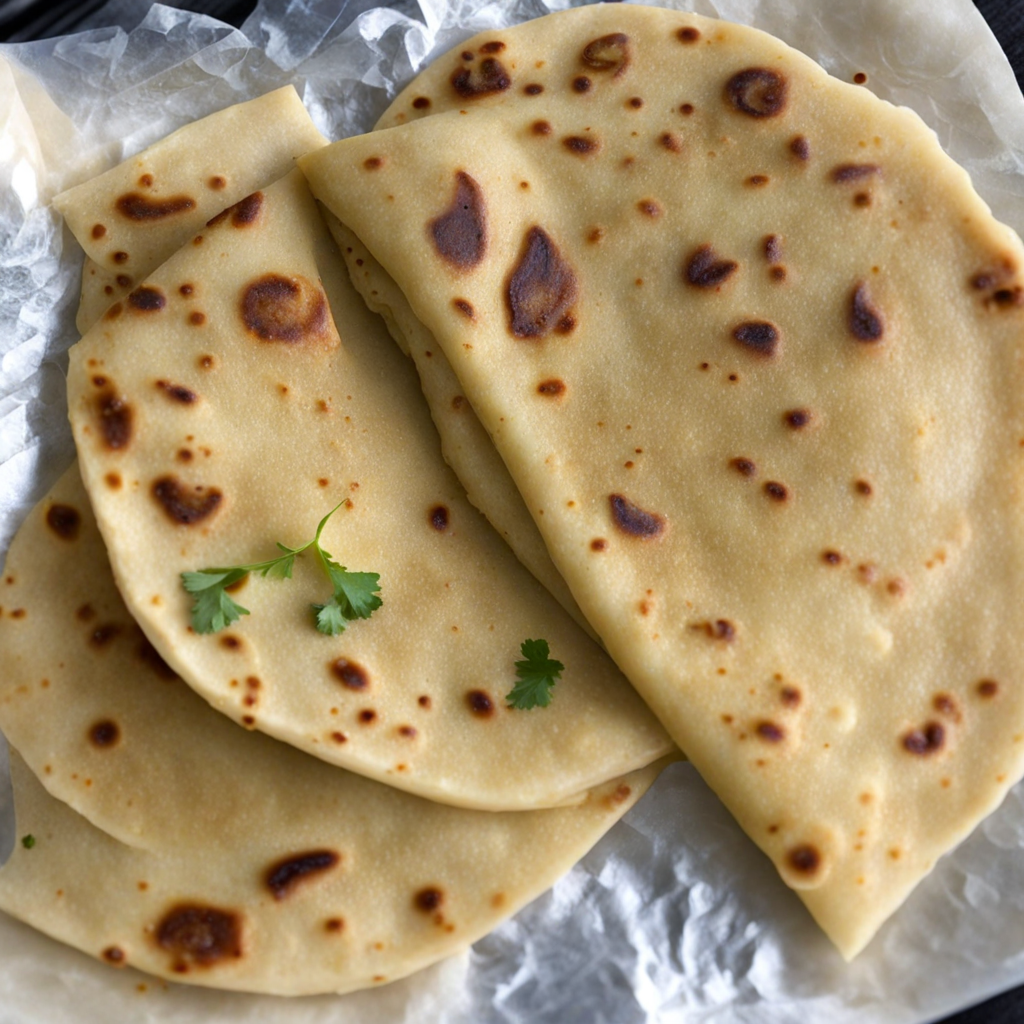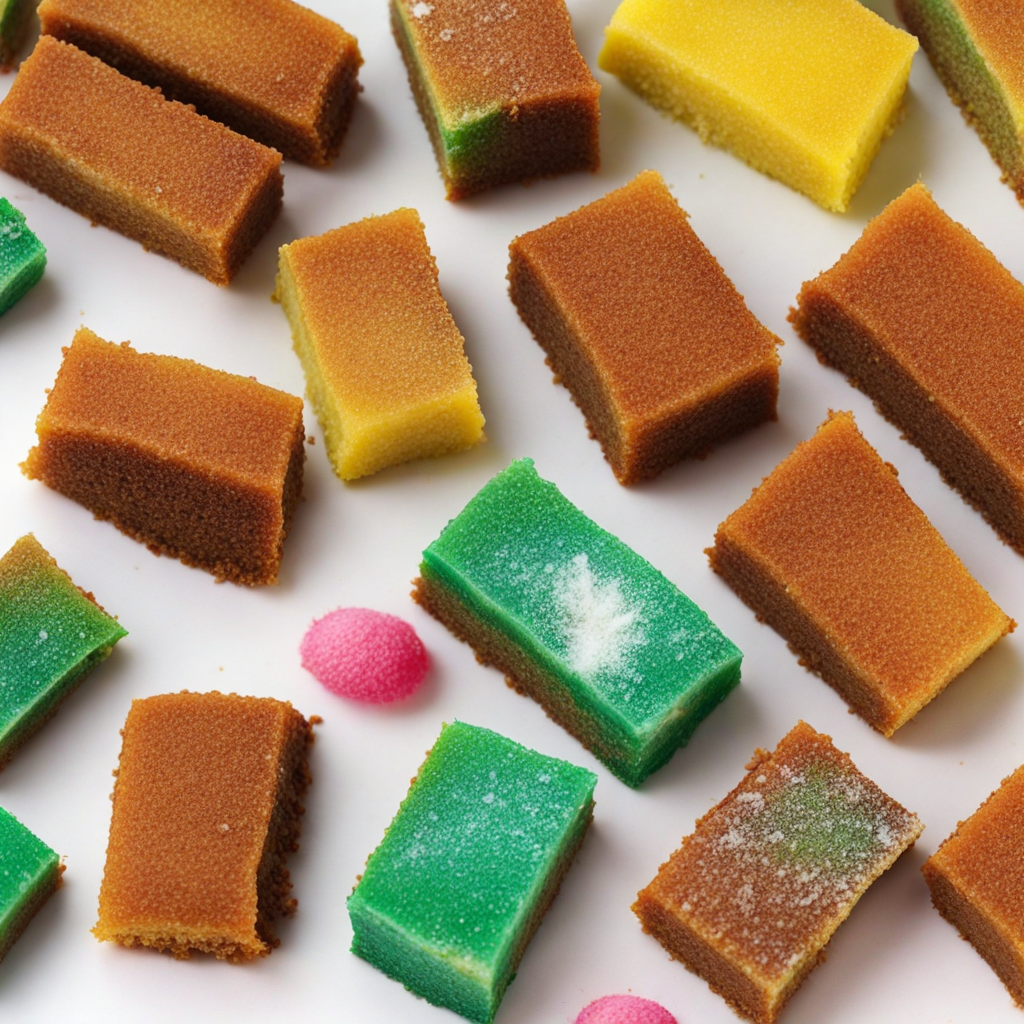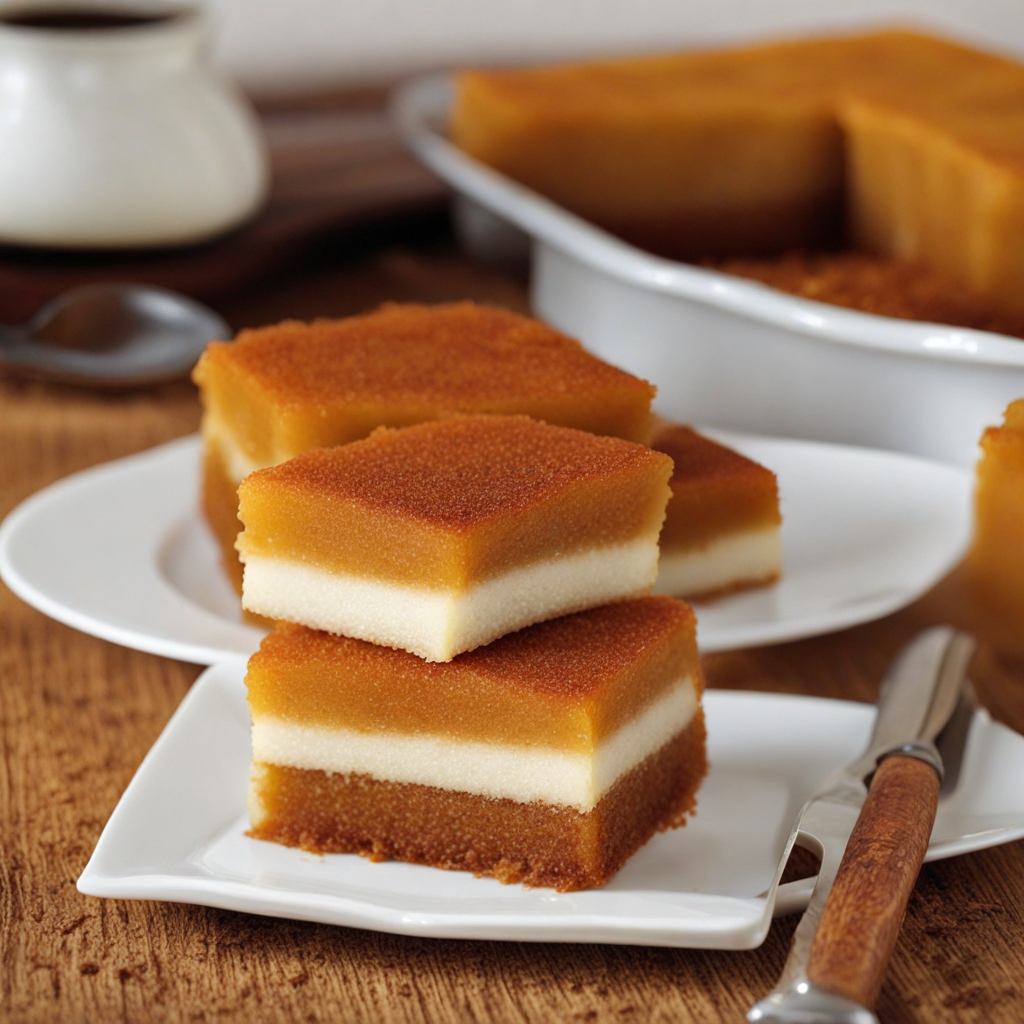Roti
Roti, a beloved staple in Guyanese cuisine, is a soft, unleavened flatbread that is both versatile and comforting. Made primarily from flour, water, and a pinch of salt, the dough is rolled out into thin circles and cooked on a hot griddle known as a tawa. The result is a warm, pliable bread with a slightly chewy texture that pairs beautifully with various dishes. Its simplicity allows it to absorb flavors, making it an ideal companion for rich, spicy curries or stews often found in Guyanese meals. What sets Guyanese roti apart is its ability to seamlessly blend with the vibrant spices and ingredients characteristic of the region’s culinary traditions. It is commonly served alongside dishes like chicken curry, dhal, or vegetable curries, where the roti acts as a vessel for scooping up the flavorful sauces. The bread's mild taste complements the bold flavors of the dishes, creating a harmonious balance that tantalizes the palate. Additionally, roti can be enjoyed on its own, often with a side of chutney or pickles for those who appreciate a bit of tang and heat. In Guyana, roti is not just food; it is a symbol of community and togetherness. It is often made during family gatherings and celebrations, where the art of rolling and cooking roti is shared among generations. The process of making roti can be a communal affair, with family members gathering to prepare the bread, adding to the warmth and connection of the meal. Each bite of roti carries the essence of Guyanese culture, making it a must-try for anyone seeking to explore new tastes and culinary experiences.
How It Became This Dish
The Evolution of Roti in Guyana: A Culinary Journey Roti, a staple flatbread, has a rich and varied history in Guyana, reflecting the country’s diverse cultural heritage and culinary practices. This simple yet versatile bread has become emblematic of Guyanese cuisine, embodying the fusion of indigenous, African, Indian, and British influences that characterize the nation’s gastronomic landscape. #### Origins of Roti The origins of roti can be traced back to the Indian subcontinent, where it has been a fundamental part of the diet for centuries. The word "roti" itself comes from the Hindi word "rotī," which means "bread." Traditionally made from whole wheat flour, water, and a pinch of salt, roti is cooked on a tawa (a flat skillet) until it puffs up, creating a delightful, soft texture. The introduction of roti to Guyana is closely linked to the arrival of Indian indentured laborers in the 19th century. Following the abolition of slavery in 1834, the British colonial government sought new labor sources for their sugar plantations. Between 1838 and 1917, around 240,000 Indians were brought to Guyana under indentured servitude. These workers brought with them their culinary traditions, including the preparation of roti, which quickly became integrated into the local food culture. #### Cultural Significance In Guyana, roti transcends mere sustenance; it symbolizes the blending of cultures and the resilience of the Indian community. It is often served with a variety of dishes, such as curry, stews, and vegetables, reflecting the fusion of Indian flavors with local ingredients. The act of making roti is often a communal affair, bringing families and friends together—a practice that highlights its cultural significance. Roti is more than just food in Guyana; it is a ceremonial dish often featured in celebrations and gatherings. During festivals, weddings, and religious ceremonies, roti takes center stage, served alongside rich curries and savory fillings. The bread has become a culinary ambassador of sorts, representing Guyana’s multicultural identity, where Indian, African, Indigenous, and European influences coalesce. #### Development Over Time As Guyana's society evolved, so too did the preparation and consumption of roti. While the traditional recipe remains popular, many variations have emerged. The introduction of different fillings has transformed roti into a versatile meal option. Today, one can find stuffed rotis filled with spiced potatoes, lentils, or vegetables, as well as the popular "dhal puri," which features a filling of ground split peas seasoned with spices. The culinary landscape of Guyana has also been influenced by modernization and globalization. While traditional methods of cooking roti—using hand-rolled dough and a hot tawa—are still prevalent, the advent of commercial kitchens and fast-food establishments has led to the introduction of pre-packaged roti. This has made it accessible to a wider audience, particularly in urban areas where time constraints may limit the preparation of traditional foods. Furthermore, the diaspora of Guyanese people has contributed to the evolution of roti beyond the country’s borders. In places with significant Guyanese communities—such as the United States, Canada, and the United Kingdom—roti has found its way into the culinary traditions of various immigrant groups, further enriching its legacy. Caribbean restaurants and food trucks often feature roti as part of their menus, showcasing its adaptability and widespread appeal. #### Roti in Contemporary Guyanese Cuisine Today, roti holds a cherished place in Guyanese households. It is often served alongside popular dishes like chicken curry, goat curry, or vegetable curry, creating a wholesome meal that embodies comfort and tradition. The act of tearing pieces of roti to scoop up curry or other dishes is a shared experience, fostering a sense of community and togetherness around the dining table. Roti has also become a canvas for culinary creativity. Chefs and home cooks alike experiment with flavors, incorporating local ingredients such as cassava, sweet potato, and spices native to the Caribbean. This trend not only keeps the traditional aspects of roti alive but also allows for innovation, ensuring that this beloved bread continues to evolve with the times. In addition to its culinary uses, roti has also taken on a symbolic role in discussions about identity and heritage among Guyanese people. It serves as a reminder of the journey of the Indian community in Guyana, celebrating their contributions to the nation’s cultural tapestry. As the country grapples with its colonial past and the complexities of multiculturalism, food like roti plays a vital role in fostering a sense of belonging and continuity. #### The Future of Roti in Guyana Looking ahead, the future of roti in Guyana appears bright. As younger generations engage with their culinary heritage, efforts are being made to preserve traditional cooking techniques and recipes. Community cooking classes and cultural festivals are increasingly popular, creating spaces for knowledge-sharing and skill development. Moreover, as global interest in diverse cuisines grows, Guyanese roti is gaining recognition on international platforms. Food bloggers, chefs, and culinary enthusiasts are exploring the unique flavors of Guyanese cuisine, often highlighting roti as a central element. This attention not only promotes Guyanese culture but also encourages a resurgence of interest in traditional cooking practices. In conclusion, roti is much more than a simple flatbread in Guyana; it is a testament to the country’s rich cultural history and the resilience of its people. From its Indian origins to its role as a beloved staple in contemporary Guyanese cuisine, roti embodies the spirit of unity amid diversity. As it continues to evolve, this iconic bread will remain a cherished symbol of Guyana’s culinary identity, bridging generations and cultures through the shared love of food.
You may like
Discover local flavors from Guyana







